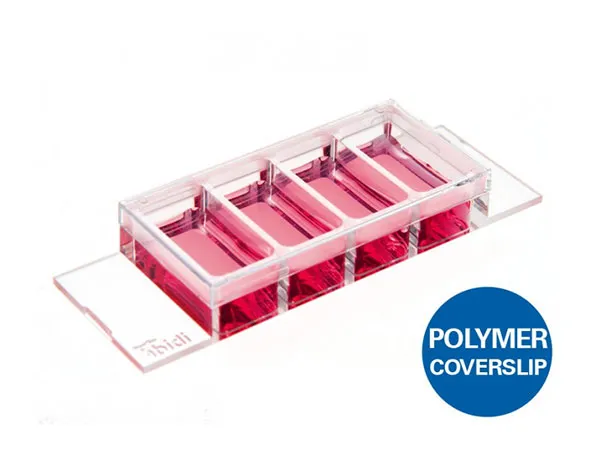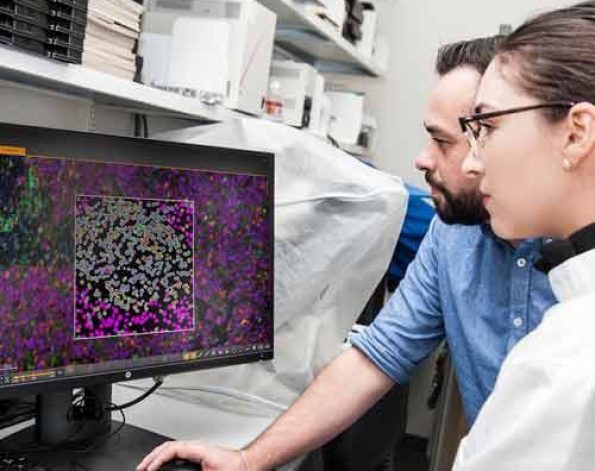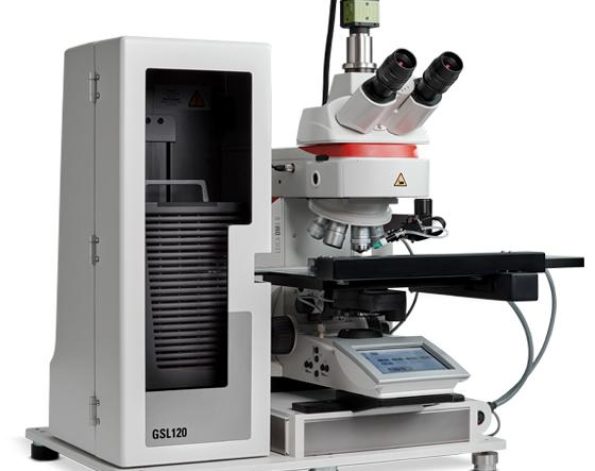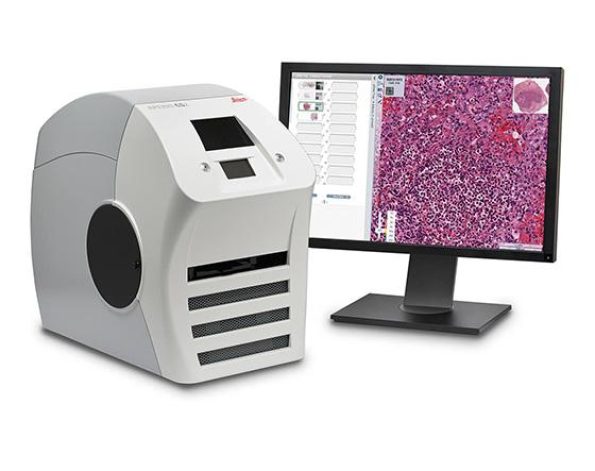Chamber slide แบบ 4 ช่อง – สำหรับงาน immunofluorescence หรือการถ่ายภาพความละเอียดสูง
- แบบ All-in-one chamber slide สำหรับการเพาะเลี้ยงเซลล์ และการถ่ายภาพด้วยกล้องจุลทรรศน์
- ก้นภาชนะมีความบางเหมือนกับ Coverslip สามารถใช้ในการถ่ายภาพความละเอียดสูงได้
- สามารถทำ immunofluorescence ได้รวดเร็วและง่าย โดยไม่มี coverslips และไม่มีการรั่วซึม
- ใช้เซลล์และ Reagent ในปริมาณน้อย ช่วยประหยัดค่าใช้จ่ายในการทำการทดลอง
A chambered coverslip with 4 wells for use in immunofluorescence and high-end microscopy
- All-in-one chamber slide used for cell culture and microscopy
- A cell culture chamber for observation of the sample through the polymer coverslip bottom using high resolution microscopy
- A microscopy slide for fast and easy immunofluorescence, with no coverslips and no leakage
- Cost-effective experiments using small numbers of cells and low volumes of reagents
- Surface Modification: Uncoated: #1.5 polymer coverslip, hydrophobic, sterilized Pcs./Box: 15 (individually packed)
- Surface Modification: ibiTreat: #1.5 polymer coverslip, tissue culture treated, sterilized
Pcs./Box: 15 (individually packed) - Surface Modification: Poly-L-Lysine: #1.5 polymer coverslip, sterilized Pcs./Box: 15 (individually packed)
Applications
- Cultivation and microscopy of cell cultures
- Transfection assays
- Fluorescence microscopy of both living and fixed cells
- Live cell imaging over extended time periods
- Suitable for DIC, when used with a DIC lid
Specifications
| Outer dimensions (w x l) | 25.5 x 75.5 mm² |
| Number of wells | 4 |
| Dimensions of wells (w x l x h) | 21.6 x 11.4 x 9.3 mm³ |
| Volume per well | 700 µl |
| Total height with / without lid | 10.8 / 9.5 mm |
| Growth area per well | 2.5 cm² |
| Coating area per well | 4.1 cm² |
| Bottom: ibidi Polymer Coverslip | |
Technical Features
- Open µ-Slide (chambered coverslip) with 4 independent wells
- Excellent optical quality imaging chamber for high-end microscopy
- Compatible with staining and fixation
- ibiTreat surface for optimal cell adhesion
- Made of biocompatible plastic material – no glue and no leaking
- Minimal mirror effect on the µ-Slide walls for light sheet microscopy
- Also available with a glass bottom
- Available with a non-adhesive Bioinert surface: µ-Slide 4 Well Bioinert, specifically suitable for 3D applications, such as spheroids and suspension cells
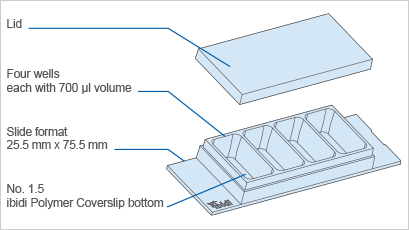
Experimental Examples
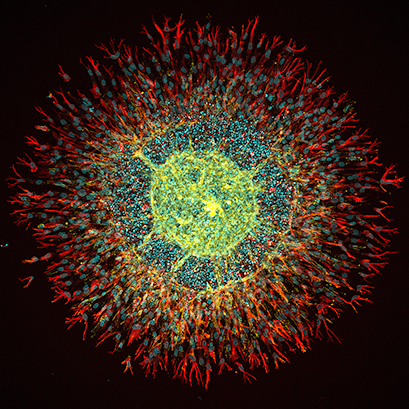
Spheroid of human intestinal fibroblasts and outgrowth endothelial cells sprouting in a fibrin hydrogel, cultured in an ibidi µ-Slide 4 Well. Endothelial cells were stained with CD31 (yellow), fibroblasts with vimentin (red), and DNA with DAPI (cyan). This image was acquired using a Leica TCS SP5 II confocal laser scanning microscope with a 10x objective. Image by Henrique Nogueira Pinto, Bioengineered 3D Microenvironments Group, Instituto de Investigação e Inovação em Saúde (i3S), Universidade do Porto, Portugal.
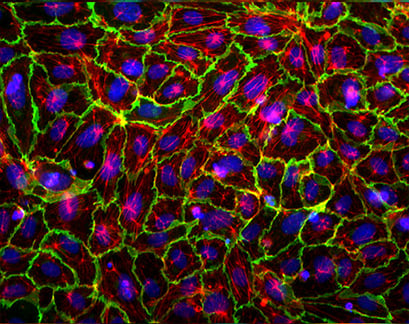
Immunofluorescence of Human Umbilical Vein Endothelial Cells (HUVEC) in a µ-Slide 4 Well. Blue: Nucleus (DAPI), Green: VE-Cadherin (Alexa555) , Red: F-Actin (Alexa488).
Meniscus-Free Phase Contrast Microscopy
µ-Slide 4 Well | µ-Slide 4 Well Ph+ |
Top View |  |
The µ-Slide 4 Well Ph+ (Phase Contrast +) is designed for excellent optical quality, especially for cell culture when normal phase contrast microscopy is being used. Opposed to the classic µ-Slide 4 Well, the Ph+ version provides a special intermediate plate in the center of the well. This plate flattens the meniscus that disturbs the phase contrast effect in normal open wells. Openings near the corners provide access to the wells for easy filling and aspiration of liquids.
This innovative technique supports meniscus-free phase contrast microscopy in a very convenient manner.
Working with the µ-Slide 4 Well Ph+ diminishes the meniscus and increases the area of well contrasted cells
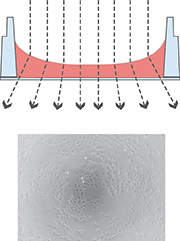 |  |
The illustration on the left shows the perturbing effect of a meniscus. Light is refracted on the air-water-interface, leading to poor contrast in microscopy. Only the small center part exhibits satisfying phase contrast.
Working with the µ-Slide 4 Well Ph+ diminishes the meniscus and increases the area of nicely contrasted cells. This nice contrast is due to the parallel beam path that is created by the plate.
